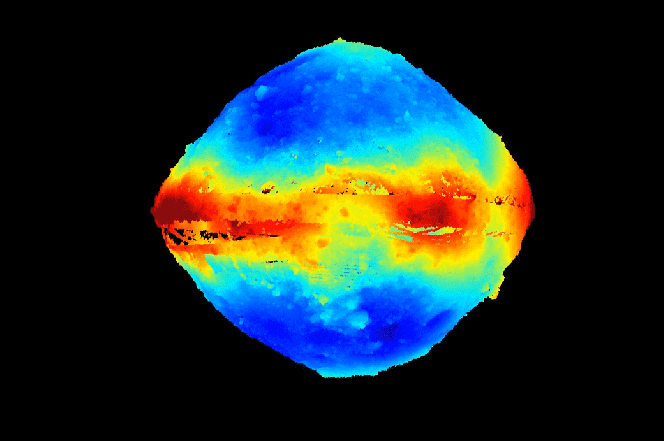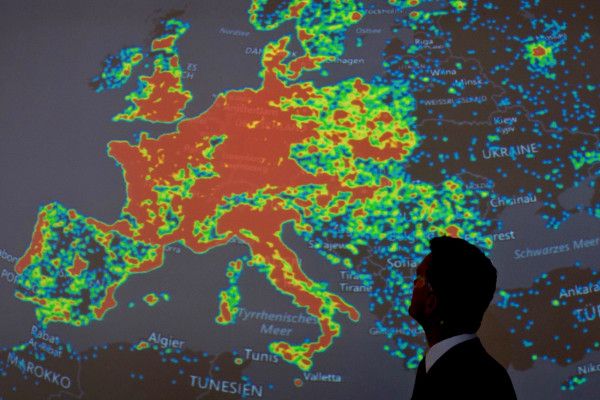Climbing the “power ascension” market.



Incorporating individual metal atoms into a surface in the right way allows their chemical behavior to be adapted. This makes new, better catalysts possible.
They make our cars more environmentally friendly and they are indispensable for the chemical industry: catalysts make certain chemical reactions possible—such as the conversion of CO into CO2 in car exhaust gases—that would otherwise happen very slowly or not at all. Surface physicists at the TU Wien have now achieved an important breakthrough; metal atoms can be placed on a metal oxide surface so that they show exactly the desired chemical behavior. Promising results with iridium atoms have just been published in the renowned journal Angewandte Chemie.

A new unified theory for heat transport accurately describes a wide range of materials – from crystals and polycrystalline solids to alloys and glasses – and allows them to be treated in the same way for the first time. The methodology, which is based on the Green-Kubo theory of linear response and concepts from lattice dynamics, naturally accounts for quantum mechanical effects and thus allows for the predictive modelling of heat transport in glasses at low temperature – a feat never achieved before, say the researchers who developed it. It will be important for better understanding and designing heat transporting devices in a host of applications, from heat management in high-power electronics, batteries and photovoltaics to thermoelectric energy harvesting and solid-state cooling. It might even help describe heat flow in planetary systems.
“Heat transport is the fundamental mechanism though which thermal equilibrium is reached,” explains Stefano Baroni of the Scuola Internazionale Superiore di Studi Avanzati (SISSA) in Trieste, Italy, who led this research effort. “It can also be thought of as the most fundamental manifestation of irreversibility in nature – as heat flows from warm areas in the same system to cooler ones as time flows from the past to the future (the ‘arrow of time’). What is more, many modern technologies rely on our ability to control heat transport.”
However, despite its importance, heat transport is still poorly understood and it is difficult to simulate the heat transport of materials because of this lack of understanding. To overcome this knowledge gap, researchers employ various simulation techniques based on diverse physical assumptions and approximations for different classes of material – crystals on one hand and disordered solids and liquids on the other.

Pew face_with_colon_three
NASA’s OSIRIS-REx mission has been steadily progressing since the spacecraft arrived at the diamond-shaped space rock known as Bennu a few months back, but not everything has gone completely to plan.
The rock ended up being far more, well, dirty than NASA originally expected. Bennu’s surface is absolutely packed with debris, posing a challenge for NASA’s team that still has to decide where to have the probe touch down on the asteroid to collect samples. Now, using a laser instrument built into OSIRIS-REx, NASA has a detailed look at how dangerous the surface truly is.
In a new blog post, NASA explains how it used a tool called the OSIRIS-REx Laser Altimeter (OLA) to scan much of Bennu’s surface. The instrument paints a 3D picture of the hard surfaces the laser bounces off of, giving NASA researchers a detailed glimpse at the asteroid’s rocky surface.

The night sky in Guiyang, the capital city of southwest China’s Guizhou province, has been a little bit brighter since Friday as 526 drones lit up the sky with a spectacular performance daily.
http://www.cctvplus.com/news/20190527/8111716.shtml#!language=1
Welcome to subscribe us on:
Facebook: https://www.facebook.com/NewsContent.CCTVPLUS
Twitter: https://twitter.com/CCTV_Plus
LinkedIn: https://www.linkedin.com/company/cctv-news-content
Instagram: https://www.instagram.com/cctvnewscontent/
Video on Demand: www.cctvplus.com
If you are in demand of this video footage, please contact with our business development team via email: [email protected]
Where to get the GAIA 160-Hybrid drone: https://www.foxtechfpv.com/gaia-160-hybrid-hexacopter-arf-combo.html
We did it!!!!!!
Broke the Flight Time Record!!!!!
This is a historic moment for UAV drone.
Foxtech GAIA 160-Hybrid has made aviation history by completing the 100km crossing sea bay flight in 180 minutes.
On 9th September, Foxtech team successfully completed the crossing sea bay flight with GAIA 160-Hybrid from changdao to dalian. GAIA 160-Hybrid took off from a yacht in changdao and landed on a coast of Dalian, the total range is 100km, this is the longest single flight of a hexacopter in the World! Foxtech GAIA 160-Hybrid hexacopter broke the flight time record!
FOXTECH GAIA 160-Hybrid hexacopter has an onboard 2000w generator that offers plenty of power to 6 very high efficiency motors to ensure a long flight time. It is installed with redundancy flight controllers, three GPS and a full range of optional equipments like RTK GPS, 20km datalink, parachute, secondary radio control to make this drone very reliable and very safe.
Foxtech team arrived in changdao on 5 September, but due to the heavy wind and bad weather conditions the flight was actually delayed, we have to stop the mission and wait for another good weather to try again. Finally, Foxtech team was ready to make their attempt on 9 September. Departing from a yacht in changdao, weather was cooperative and all was going well.
Foxtech GAIA 160-Hybrid successfully took off from the yacht, with GPS guidance and automated flight, the drone could fly independently. And the drone was accompanied by a yacht staying within a range of 500 meters, so that our operator could control the aircraft at any time. During the flight, the wind was rising, force 7 grades, the wind speed is about 17m/s. But with the robust stability of GAIA 160-Hybrid and rich experience of our technicist, GAIA 160-Hybrid overcame the adverse weather conditions, and just over 3 hours after takeoff, GAIA 160-Hybrid landed safely in a coast of Dalian.
The journey was filled with challenges, because any type of adverse wind will have a
severe impact on the drone. So this time the successful flight dramatically proved the.
reliability and potentials of GAIA 160-Hybrid, proved that Foxtech GAIA 160-Hybrid is a high-performance flying platform which is able to adapt many complicated environment, especially the strong breeze and gale weather. A longer flight time coupled with good stability of GAIA 160-Hybrid opens a wide range of new commercial possibilities for businesses such as inspection of offshore platforms, search and rescue, power line inspection etc.

What happens when you combine a Tesla pickup truck with a bit of off-road SpaceX flair? The answer is in this Tesla truck render.
If the render looks familiar it’s because we’ve seen a similar Tesla truck render from the same render artist before. However, this SpaceX off-road version didn’t register on our radar the first time around.


In a rare feat, French police have hijacked and neutralized a massive cryptocurrency mining botnet controlling close to a million infected computers.
The notorious Retadup malware infects computers and starts mining cryptocurrency by sapping power from a computer’s processor. Although the malware was used to generate money, the malware operators easily could have run other malicious code, like spyware or ransomware. The malware also has wormable properties, allowing it to spread from computer to computer.
Since its first appearance, the cryptocurrency mining malware has spread across the world, including the U.S., Russia, and Central and South America.